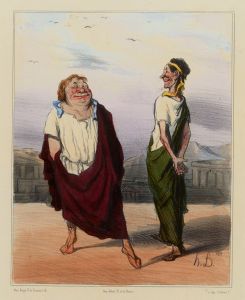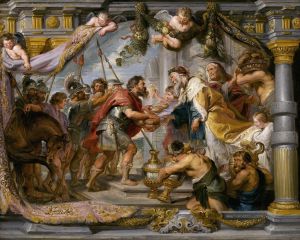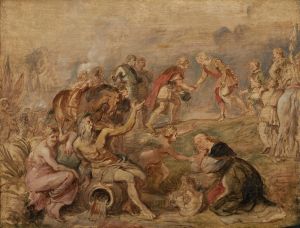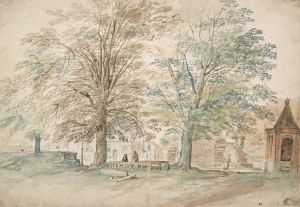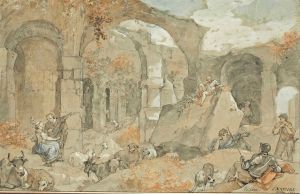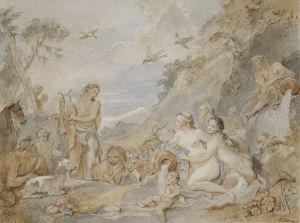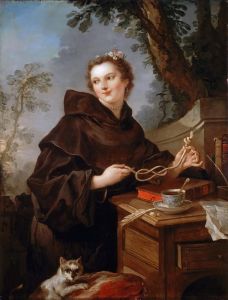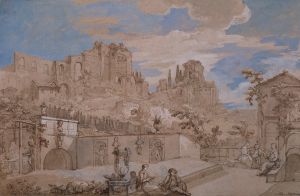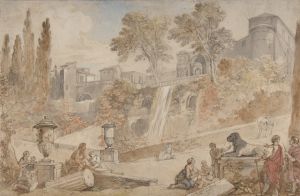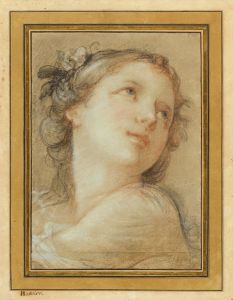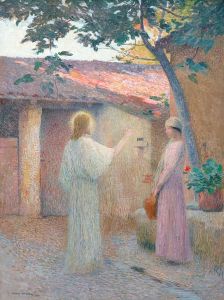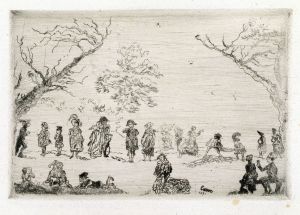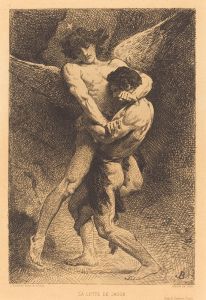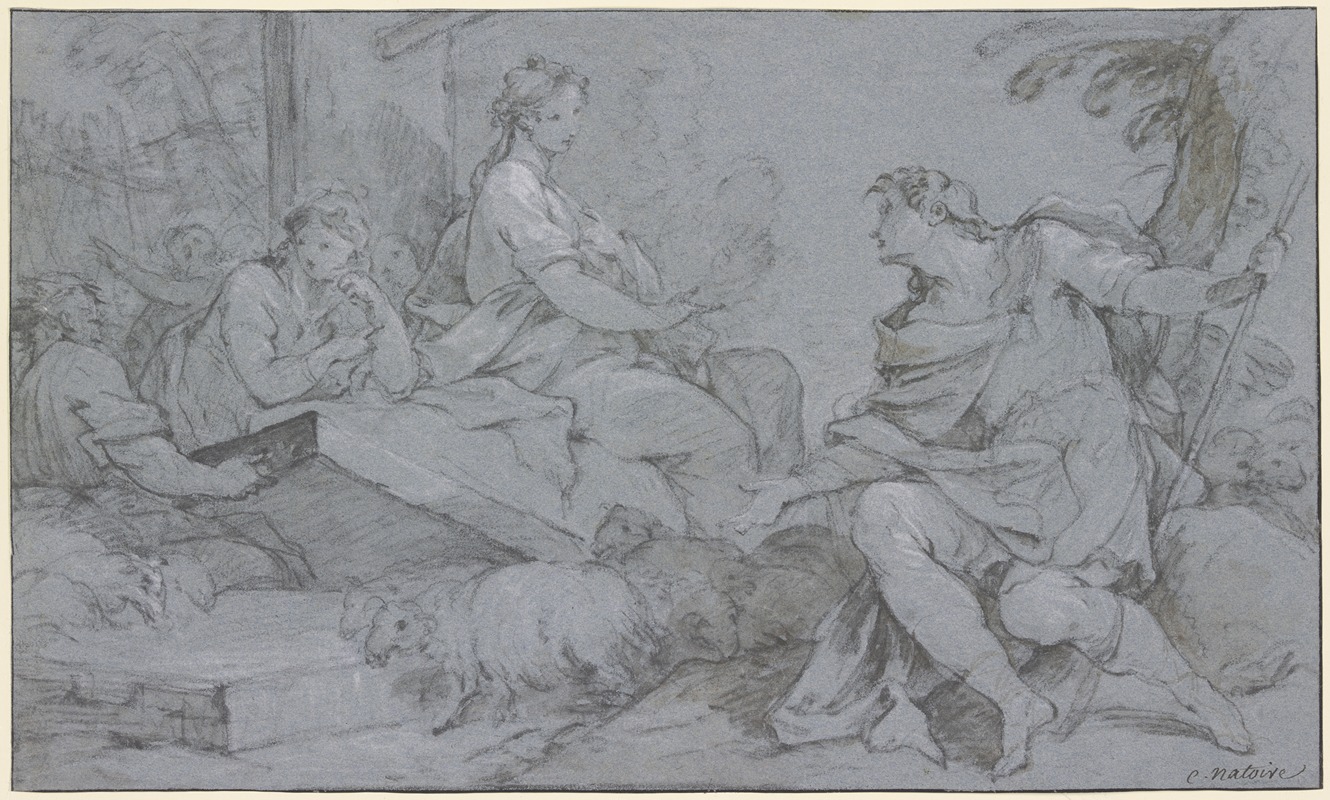
Jacob and Rachel at the Well
A hand-painted replica of Charles-Joseph Natoire’s masterpiece Jacob and Rachel at the Well, meticulously crafted by professional artists to capture the true essence of the original. Each piece is created with museum-quality canvas and rare mineral pigments, carefully painted by experienced artists with delicate brushstrokes and rich, layered colors to perfectly recreate the texture of the original artwork. Unlike machine-printed reproductions, this hand-painted version brings the painting to life, infused with the artist’s emotions and skill in every stroke. Whether for personal collection or home decoration, it instantly elevates the artistic atmosphere of any space.
Charles-Joseph Natoire was an 18th-century French painter known for his contributions to the Rococo movement, a style characterized by ornate detail, light colors, and playful themes. One of his notable works is "Jacob and Rachel at the Well," which depicts a biblical scene from the Book of Genesis. This painting exemplifies Natoire's skill in capturing narrative moments with elegance and emotional depth.
The painting illustrates the moment when Jacob, traveling to his mother's homeland, encounters Rachel at a well. According to the biblical story, Jacob is immediately struck by Rachel's beauty and helps her water her flock, marking the beginning of their love story. Natoire's interpretation of this scene is imbued with the soft, graceful lines and pastel colors typical of Rococo art, which serve to highlight the romantic and serene nature of the encounter.
Natoire was a prominent figure in the French art scene during the 18th century. He trained at the prestigious Académie Royale de Peinture et de Sculpture in Paris and later won the Prix de Rome, which allowed him to study in Italy. His time in Rome greatly influenced his style, as he absorbed the classical traditions and incorporated them into his work. Upon returning to France, Natoire became a sought-after artist, receiving commissions from the French court and nobility.
"Jacob and Rachel at the Well" reflects Natoire's mastery of composition and his ability to convey emotion through gesture and expression. The painting's composition is carefully balanced, with Jacob and Rachel positioned prominently in the foreground, drawing the viewer's attention to their interaction. The background is typically Rococo, with lush landscapes and soft, diffused lighting that creates an idyllic setting for the narrative.
Natoire's work is often compared to that of his contemporaries, such as François Boucher and Jean-Honoré Fragonard, who also embraced the Rococo style. However, Natoire's paintings are distinguished by their classical influences and his focus on historical and biblical themes, which set him apart from his peers who often favored more frivolous and mythological subjects.
Throughout his career, Natoire held several prestigious positions, including director of the French Academy in Rome. His influence extended beyond his paintings, as he played a significant role in shaping the next generation of artists through his teaching and leadership. Despite the Rococo style falling out of favor towards the end of the 18th century, Natoire's work continued to be appreciated for its technical skill and aesthetic beauty.
"Jacob and Rachel at the Well" remains an important example of Natoire's artistic legacy. It captures a moment of tenderness and connection, rendered with the elegance and refinement that characterize the Rococo movement. Today, Natoire's works can be found in various museums and collections, where they continue to be studied and admired for their contribution to the history of art.





